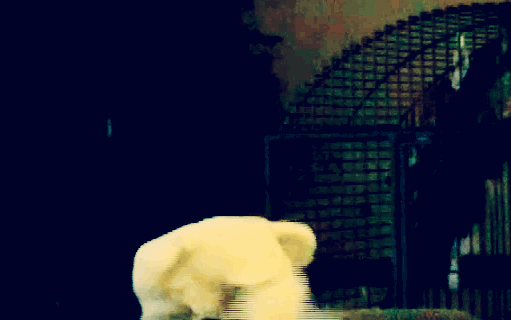Cockatoo Who Taught Self to Head-Bang Proves Rock Transcends Species
Birds of a feather flock together, but this cockatoo rocks alone. A new study reveals that the internet-famous cockatoo named Snowball can do more than just bust moves — whether headbanging, wildly tapping its foot or gyrating its mohawked head — in sync with the beat of the music. The parrot creates his own steps as well.
This entertaining finding has profound implications for our understanding of animal intelligence. In effect, the discovery indicates that spontaneous dance isn't a human invention, but rather something that occurs when certain cognitive and neural capacities align in animal brains, the researchers said.
"Parrots are absolutely amazing in their human-like abilities and, though not related to us, are possibly the closest animal group to us in terms of musical (and other) abilities," said Robert Heinsohn, a professor in the Fenner School of Environment and Society at Australian National University, who has studied cockatoos but wasn't involved in the new research. [Pretty Bird: Images of a Clever Parrot]
The inspiration for the study began with the pet bird Snowball, a sulphur-crested cockatoo (Cacatua galerita eleonora) whose hilarious dance moves went viral on YouTube a decade ago, as he shimmied to the Backstreet Boys.

Intrigued, researchers studied Snowball to gain insight into how animals process music, which in turn could shed light on the evolution of human musicality, said Aniruddh Patel, a professor of psychology at Tufts University in Massachusetts. In 2009, Patel and his colleagues published a study on Snowball in the journal Current Biology, "showing he spontaneously synchronized his movements to the beat of music, something seen in every human culture but which had never been observed in a nonhuman animal," Patel told Live Science in an email.
Then, Snowball surprised the researchers again. "After that study, we noticed him doing new movements to music that we hadn't seen before," Patel said. These new moves were Snowball's own creations; they weren't modeled after any cavorting from his owner, Irena Schulz, nor was he trained (for instance, no food rewards were involved) as he came up with this new repertoire, Patel said.
So, the researchers studied Snowball again. They filmed the 12-year-old parrot dancing to two classic '80s hits: "Another One Bites the Dust" by Queen and "Girls Just Want to Have Fun" by Cyndi Lauper. The team played each song three times, for a total of 23 minutes of music overall.
Sign up for the Live Science daily newsletter now
Get the world’s most fascinating discoveries delivered straight to your inbox.
Then, researchers went through the film frame by frame to label Snowball's different dance moves. "Fortunately, the first author [R. Joanne Jao Keehn, a research assistant professor of psychology at San Diego State University] had double-majored in cognitive science and dance, so she was up to the task," Patel said.
The scientists found that Snowball has 14 distinct dance moves and two composite moves, more than one might see at an awkward middle-school dance.
"He didn't just stomp his feet or bob his head (both movements that have other purposes and are easily adapted to dancing) but created new moves with other body parts," said Heinsohn, who watched Snowball’s YouTube videos. "He didn't get stuck in any particular pattern, but went on improvising. ... It's possible he learned some of it from his human owners, but even that is impressive as it means he would have worked out the functional equivalence of, for example, wings and arms," Heinsohn told Live Science in an email.
However, unlike with typical human dance, Snowball tended to groove in snippets lasting just 3 to 4 seconds. Moreover, every time he heard a specific tune, he danced slightly differently, showing that he wasn't tied to certain music-move combinations, instead exhibiting flexibility and even creativity when thinking of new sequences. [Photos of the World's Largest Flying Bird]
Patel, the senior researcher on the new study, and his colleagues proposed that five traits together allow both humans and parrots to dance:
- The ability for complex vocal learning, which "creates strong links in the brain between hearing and movement," Patel said.
- The capacity to learn imitation of nonverbal movement.
- A tendency to form long-term social bonds. This relates to the fact that Snowball and humans seem to dance for social reasons, Patel said.
- The ability to learn a complex sequence of actions. "[This] also requires sophisticated neural processing, since we're talking about movements that aren't innate," Patel said.
- Attentiveness to communicative movements, which relates to the structure of movements and not just the consequences of these actions.
Patel added that while Snowball is "a wonderful animal," he's not unique. "There are examples of other parrots making diverse movements to music on the internet, but Snowball is the first to be studied scientifically in this regard," Patel said.
The study was published online today (July 8) in the journal Current Biology.
- In Photos: Birds of Prey
- In Photos: The Famous Flightless Dodo Bird
- Booby Album: Images of Bullying Birds
Originally published on Live Science.

Laura is the archaeology and Life's Little Mysteries editor at Live Science. She also reports on general science, including paleontology. Her work has appeared in The New York Times, Scholastic, Popular Science and Spectrum, a site on autism research. She has won multiple awards from the Society of Professional Journalists and the Washington Newspaper Publishers Association for her reporting at a weekly newspaper near Seattle. Laura holds a bachelor's degree in English literature and psychology from Washington University in St. Louis and a master's degree in science writing from NYU.









